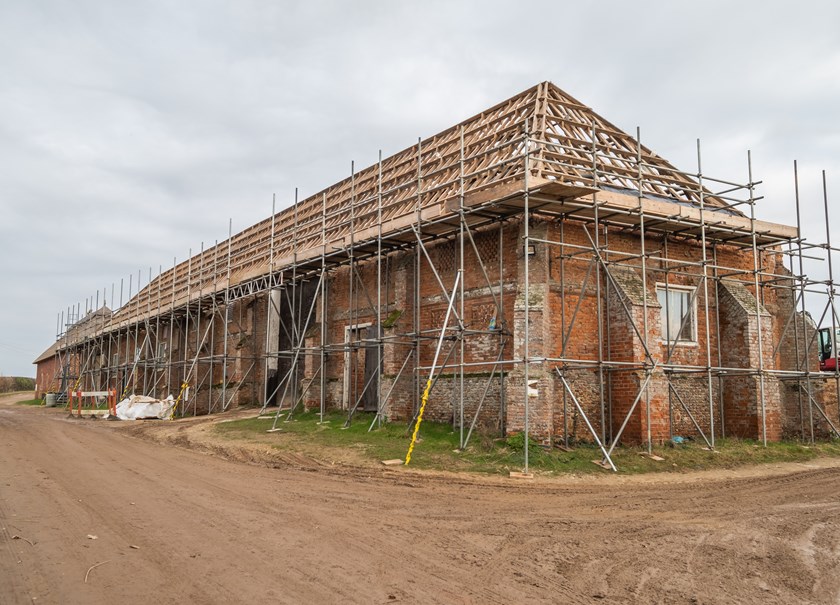A construction lawyer’s guide to buying a new build property off plan in London
Insight

The residential development market in central London continues to deliver properties at the pinnacle of modern living in the most prestigious neighbourhoods of the capital featuring the latest luxury mod-cons, services and facilities as well as excellent security provisions.
These developments are almost exclusively procured by professional developers with the design and construction risk carried by the developer. Notwithstanding this, there will still be an increased risk when purchasing a property off plan, so it is important to ensure a project has the correct participants and the correct safety net of contracts and collateral contracts in place.
The Participants
The Employer
The project will originate with the developer taking on the role of the "employer" (also called the "client"). It will be for the employer to procure the construction work from the contractors and consultants.
The Design Team
- Architect: An architect will be at the heart of the design team. It will be the architect, sometimes acting in conjunction with the Interior Designer, that leads the design of the project and their vision will often be key to the success and prestige of a project.
- Interior designer: Generally speaking, an interior designer will work alongside the architect to advise on the appearance and furnishing of a property. Different interior designers will carry different levels of influence over the project design, and in some cases the interior designer will hold a design leadership role.
- Structural engineer: A structural engineer will address the key issues in relation to the structural integrity of the project, working closely with the architect and the interior designer in doing so to preserve the architect’s vision.
- Mechanical and electrical engineer (also called a "services engineer"): This engineer will be responsible for the electrical, heating and ventilation solutions for a project, amongst other items.
Other specialist design consultants may be retained, depending upon the nature of the project, and might include an acoustic consultant and a landscape architect.
Other advisers
- Project manager: An experienced and able project manager is essential to a large development. The architect may take the lead in the design of the project, but specialist project managers offer the specific skills needed to plan and execute sophisticated building works.
- Quantity surveyor (also called a “cost consultant”): A quantity surveyor will advise on the cost of the project (commonly this role and the project manager role will be covered by a single consultant).
- Principal Designer (CDM Regulations): This is a professional consultant appointed to advise on health and safety issues throughout the design and construction process.
- Principal Designer (Building Safety Act): This is a professional consultant appointed to ensure compliance with Building Regulations throughout the project.
The Main Contractor
The building works will normally be undertaken by a main building contractor. It is a feature of the UK construction industry that whilst a main contractor may take on a project to deliver a completed house for a fixed price, the contractor will often undertake little if any of the work itself. Instead, the contractor will manage the project and will sub-contract each element of the building works to specialist sub-contractors.
The Contracts
The undertaking of design and construction works is known as "procurement" of the works. Procurement takes many forms, each with its own advantages and disadvantages.
For developments of this nature, an employer will typically use one of the following:
- "traditional procurement" meaning the employer will retain each member of the design team and also employ the main contractor;
- "design and build" meaning the employer will retain a main contractor to undertake the whole project – its design and construction – and the main contractor will retain the design team itself; or
- “construction management” meaning there is no main contractor and the employer himself retains each specialist works contractor (the sub-contractors in traditional procurement). This is high risk as it puts the entire risk of the co-ordination of the project onto the employer’s shoulders.
There are three key elements to any procurement process: the price of the works, the time for their completion and the quality of the works. This analysis is slightly simplistic, but it is true to say that there is a dynamic between the three elements and the best development projects achieve an acceptable balance between them. More often than not in the development of prime property, the key element is the quality of the works.
A common solution for a developer undertaking the development of luxury flats would be to have the "shell and core" of the building constructed on a design and build basis, to maximise price advantages, and for the "fit out" of the building to be undertaken on a traditional or construction management basis, to maximise the quality of the finishes.
What to consider as a purchaser
Each project will have individual nuances and will require advice on its own merits, but there are common themes to all projects and we have set out below some matters to be considered ahead of purchase.
- Is the financial covenant strength of the developer adequate? This is an important consideration when buying off-plan. A purchaser will want to ensure that the developer they are investing in has the financial resources to be able to deliver the property.
- Have the right professional consultants been appointed? As detailed above the appointment of key professional designers and other professional consultants are crucial to the success of a project.
- Have the contracts been agreed? As a basic rule, there will usually be a building contract with a main contractor, and deeds of appointment for each professional consultant. These documents may be supplemented by other documents, such as collateral warranties, novations, bonds and guarantees.
- Have all consents and permissions been obtained? Planning permission and, if applicable, listed building and conservation area consent may be required. In addition, it is prudent to obtain initial approval that the designs comply with Building Regulations (and in the case of a higher risk building over 18m or 7 storeys high, building control approval will be required from the Building Safety Regulator before development works can start).
- Are there any funding or tax issues? It is clearly essential that any external funding required to undertake the project is committed before works are commenced. In addition, the project's tax status should be carefully considered.
- Are collateral warranties and/or third party rights available? Collateral warranties allow the purchaser of a property the opportunity of recourse against the contractor and consultants responsible for the works. Most luxury developments contain sophisticated equipment (air handling plant, security systems and so on) and a purchaser should also require product guarantees from appropriate suppliers.
- Is there is NHBC (or similar) cover? New homes in the UK are normally covered by a form of insurance, the principal provider of which is now the NHBC. This offers coverage against design or construction defects which only become apparent after completion. However, the cover provided is subject to strict financial limits and may not provide adequate comfort for a purchaser of super prime property so may need to be “topped up” by insurance.
Project Completion
The moment the purchaser has been waiting for!
There will be a number of certificates, consents and other approvals to be obtained before the building can be used and a purchaser can move into a property, the main one being the certificate of practical completion. This is usually taken to mean that the project is ready for use and is free from major defects. The certificate may be issued subject to certain "snags" – usually minor and cosmetic defects which do not affect the use of the property. The contractor will be bound to address these snags following completion, as well as any defects that arise during the defects liability period. The Building Regulations completion certificate should also be in hand ahead of move in.
Delivery of the certificate of practical completion and the Building Regulations completion certificate (as well as all other relevant consents, approvals, warranties, guarantees and third party rights) will form part of the handover procedure that will need to be set out in the purchase contract. A purchaser should seek to hold back a portion of the purchase price (a “retention”) for the duration of the defects liability period and in regard to any other outstanding works at the point it takes occupation of the property.
This publication is a general summary of the law. It should not replace legal advice tailored to your specific circumstances.
© Farrer & Co LLP, June 2024






